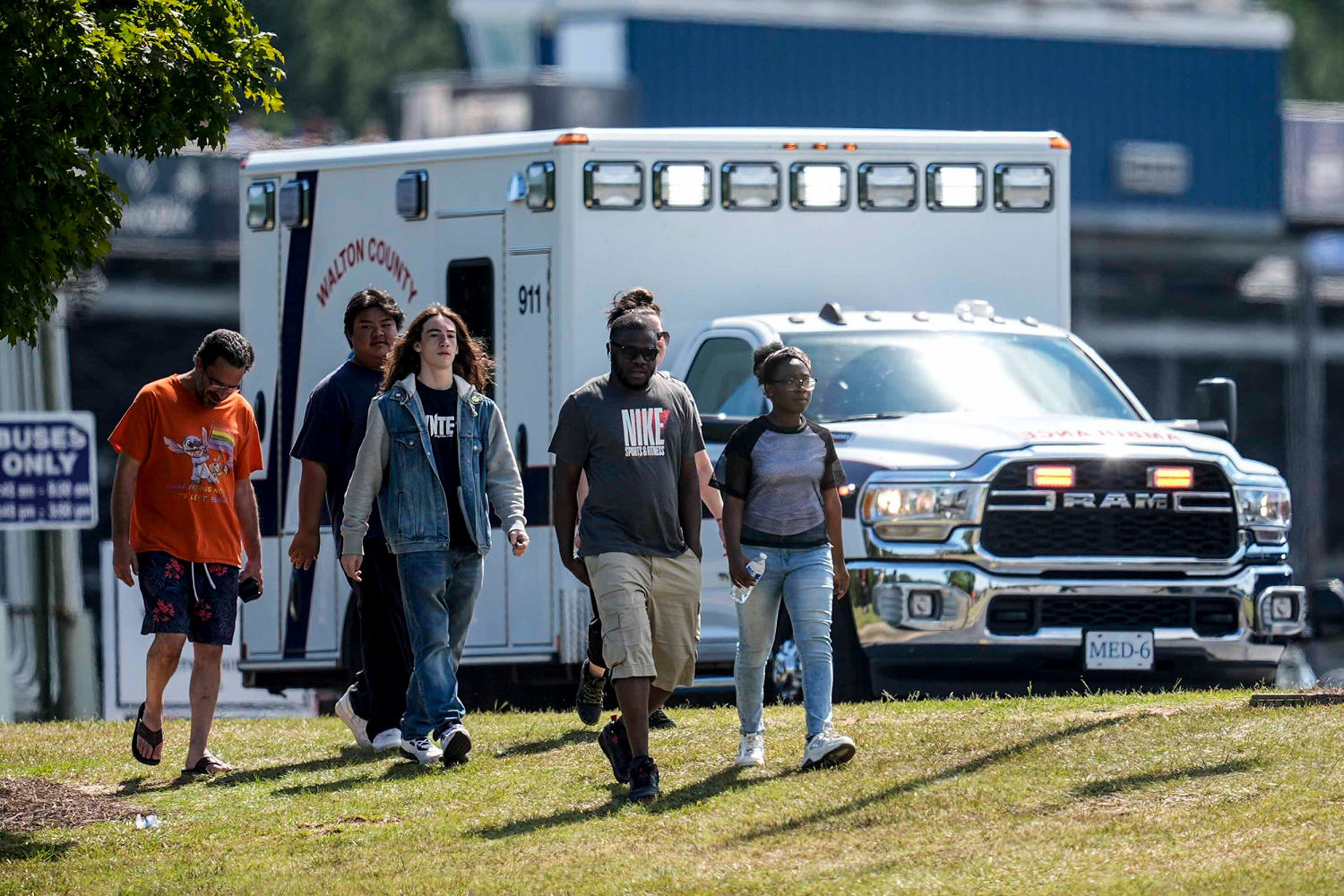
Here’s the thing about school shootings; the response can be flawless, and the outcome can still be horrific. On Wednesday morning, two students and two teachers at Apalachee High School in Georgia took their last breaths after being shot by a 14-year-old. Nine others at the school were wounded during the mass shooting.
Moments after the first shots were fired, screens in classrooms flashed the message, “hard lock down.” Well-rehearsed students pushed desks and chairs up against classroom doors to form barricades even as more shots echoed through the halls. School resource officers quickly confronted the shooter, who dropped to the ground and surrendered. EMS responders sped to the scene and tended to the casualties.
A 14-year-old shouldn’t have a gun, shouldn’t bring it to school, shouldn’t kill four people and wound nine more.
It was an exceptional response to an event that should have never happened.
A 14-year-old shouldn’t have a gun, shouldn’t bring it to school, shouldn’t kill four people and wound nine more. Teachers shouldn’t die at the hands of a student, and students shouldn’t perish during second period algebra.
We celebrate heroic responses and reflexive reactions imprinted on the brains of a generation of children and first responders through endless active shooter drills. Then we mourn the senseless deaths of those who didn’t make it. It’s a paradox, of course. Two truths that seem contradictory because they are. That’s because a large segment of America is approaching this the wrong way.
The folks who don’t want to talk about root causes will limit themselves to singing the praises of those who professionally spring into action to lock down, shoot down and clean up the carnage. That’s what U.S. Rep. Mike Collins (R-Georgia), did on his X account. He represents the district where the killing happened. He also posted a campaign ad where he sets off an explosion by firing an assault style rifle at a target.
In just this year, almost 50 people have died in school shootings in America. The Apalachee school shooting was the 23rd in 2024 that caused injury or death. Over 382,000 students, in 416 shootings, have dealt with an incident of gun violence at their school since the Columbine shooting of 1999.
Since it’s the start of the school year in much of our country, instead of talking yet again about the obvious need for gun safety enforcement, I’d rather offer suggestions to parents that might help make this academic year less lethal than previous years.
Here’s my top four questions for parents to pose to school leaders.
First, ask your school administrators if there is a Behavioral Threat Assessment and Management team at your school. These multi-disciplinary teams, often include a school counselor and/or psychologist, school resource officer, a senior teacher, school nurse and an administrator. They meet regularly to discuss concerns brought to their attention about a student’s conduct as it relates to potential violence, and to decide the best course of action. Training and guidance on forming and maintaining a BTAM is readily available.
Second, ask how or if your school encourages reporting by students and employees about potential violence, also known as “bystander reporting.” Your school should make it easy for everyone to share their concerns with identified personnel, including anonymously, and should take positive steps to erase any stigma associated with such reporting.
We’d all rather celebrate a violent act prevented than grieve over what could have or should have happened.
Third, ask your school leadership to explain how they proactively identify and address bullying. Available data strongly suggests that many school shooters have been bullied, often repeatedly, by their peers. Send your school board a copy of the U.S. Secret Service report linking bullying to school shooters.
Fourth, ask your high school administrator if there is a peer counseling program at the high school. These programs, led by a faculty member with mental health training, have been proven to help tackle depression and suicidal ideation. It’s no secret that kids trust their peer group and are more willing to openly discuss sensitive issues with them. Peers also know what’s happening on social media, who’s eating alone in the cafeteria, and who is experiencing severe stress at home.
It’s also essential to remember that parents play the paramount role in preventing the unthinkable at school. Maintaining an open dialogue with your student must start early in their life and become a part of everyday existence. A shared meal, a car ride home, or some joint activities are often the best times to learn more about what’s happening in your child’s life, and within their peer group.
We’d all rather celebrate a violent act prevented than grieve over what could have or should have happened. We can make this school year safer by prioritizing how we identify and mitigate the threat of violence, as much or more than we practice locking doors and hiding under desks.

Leave a Reply